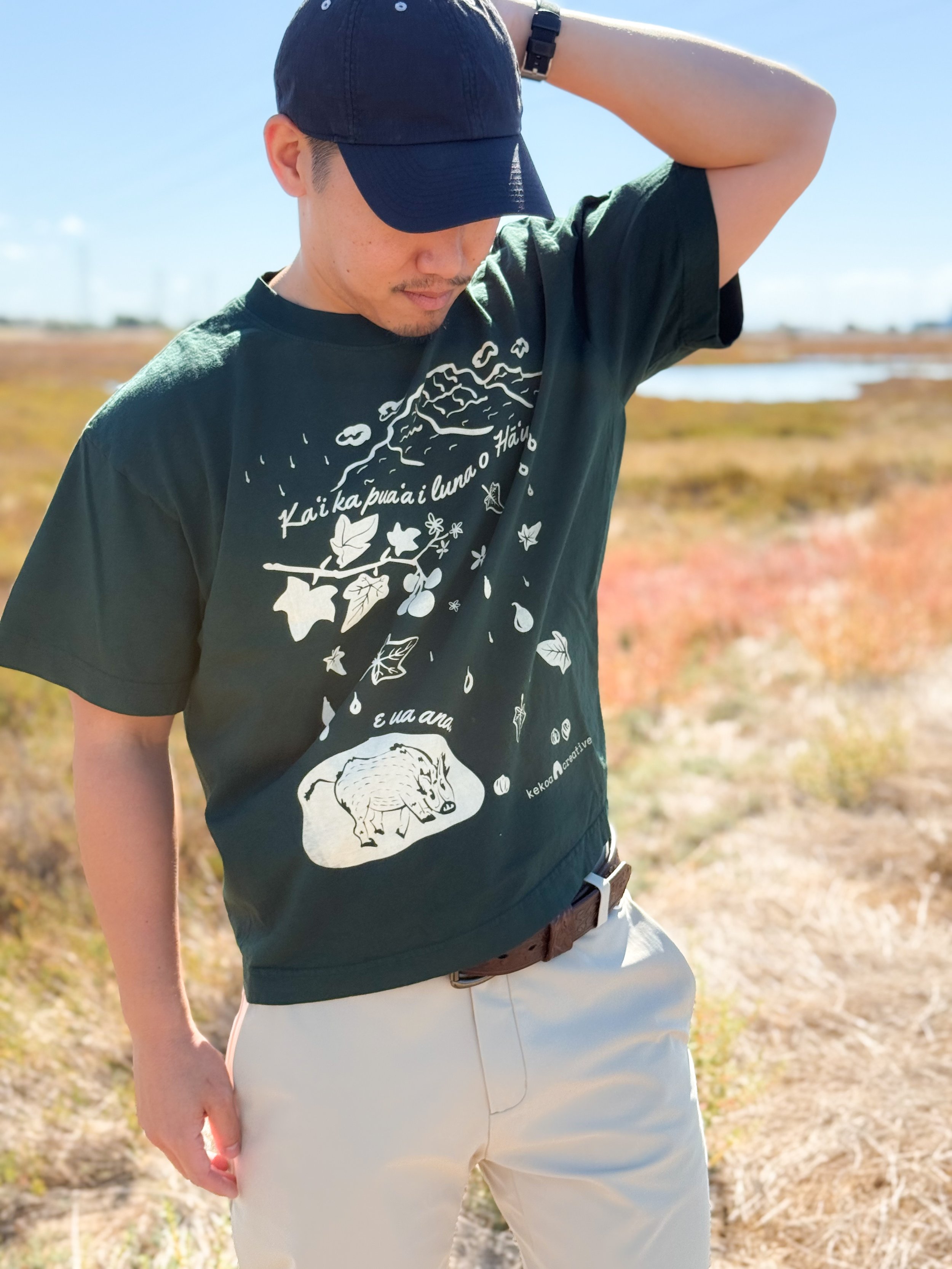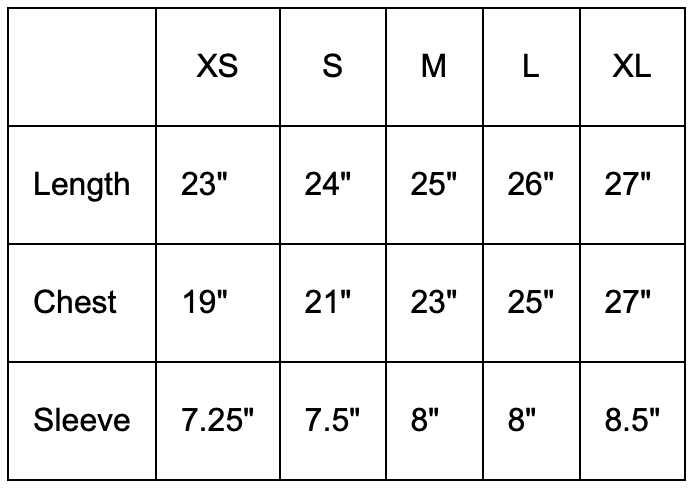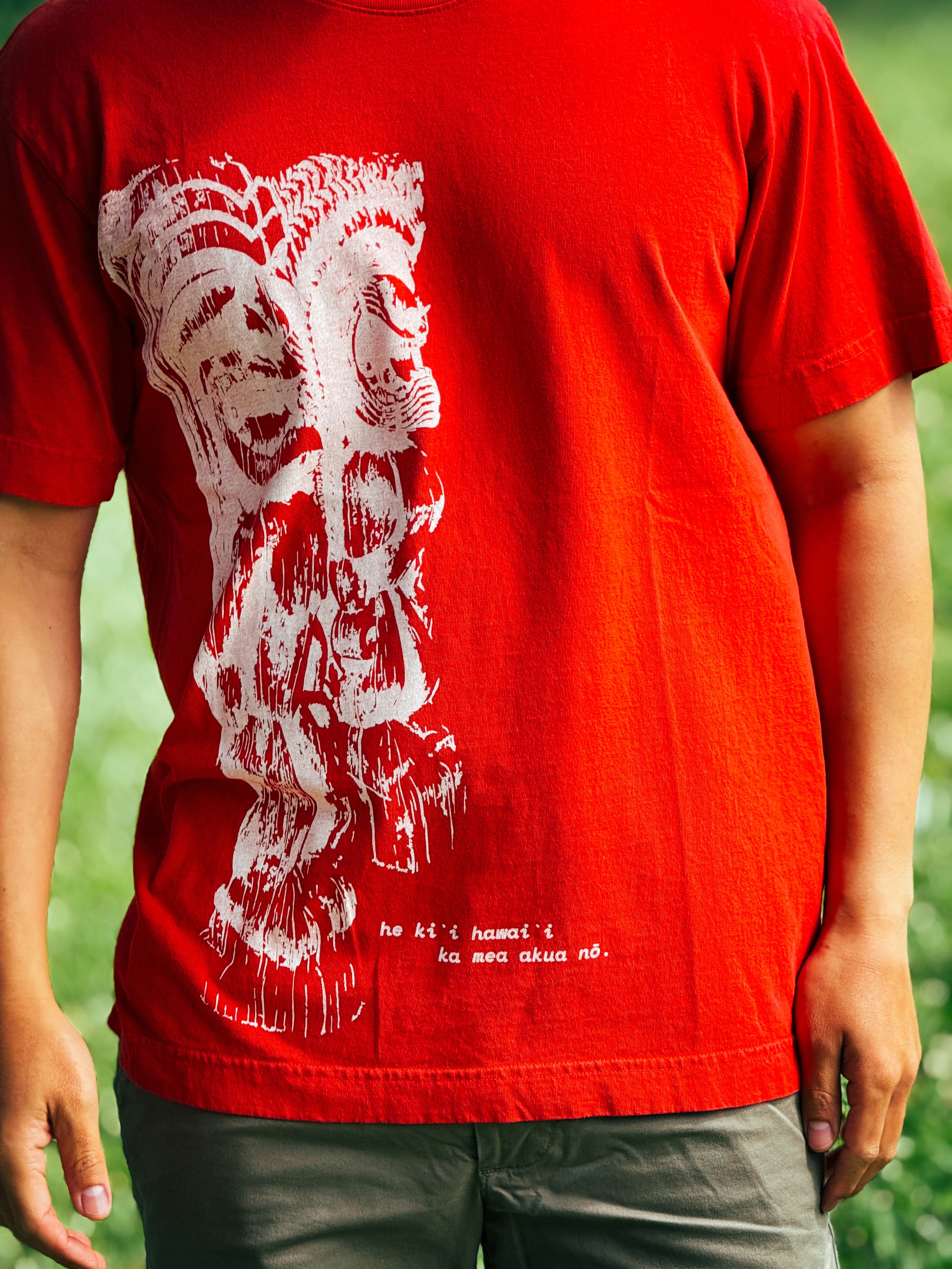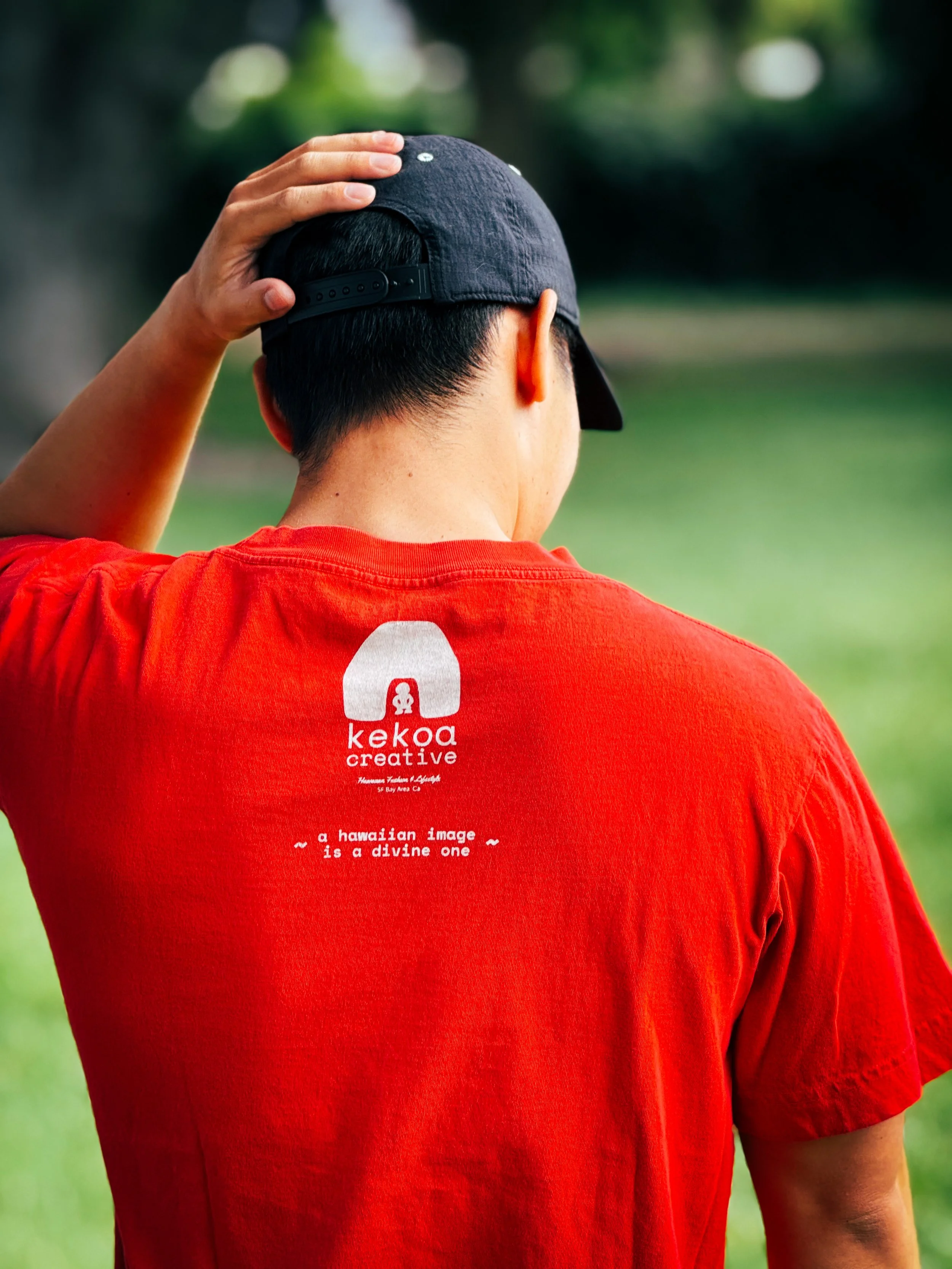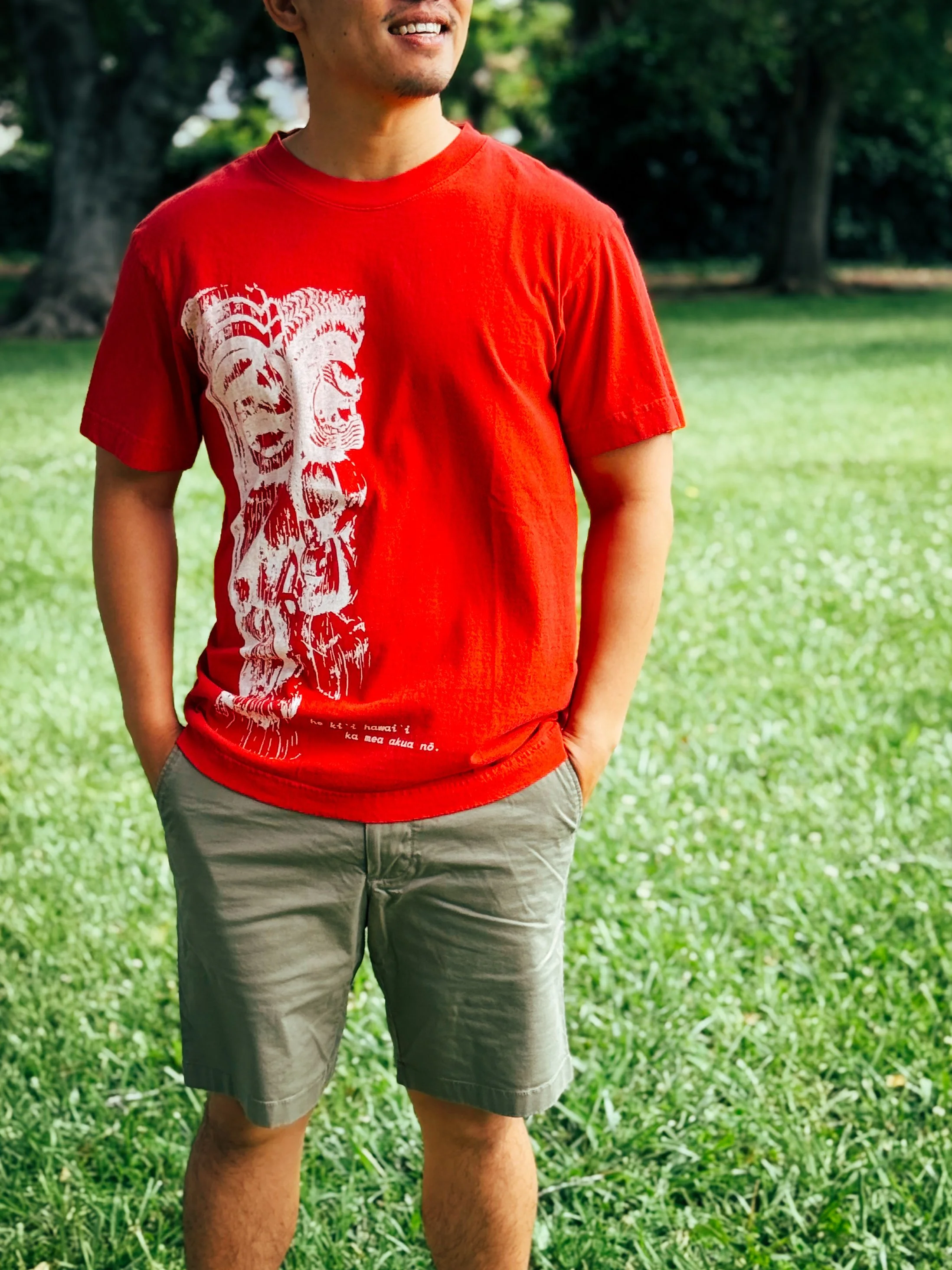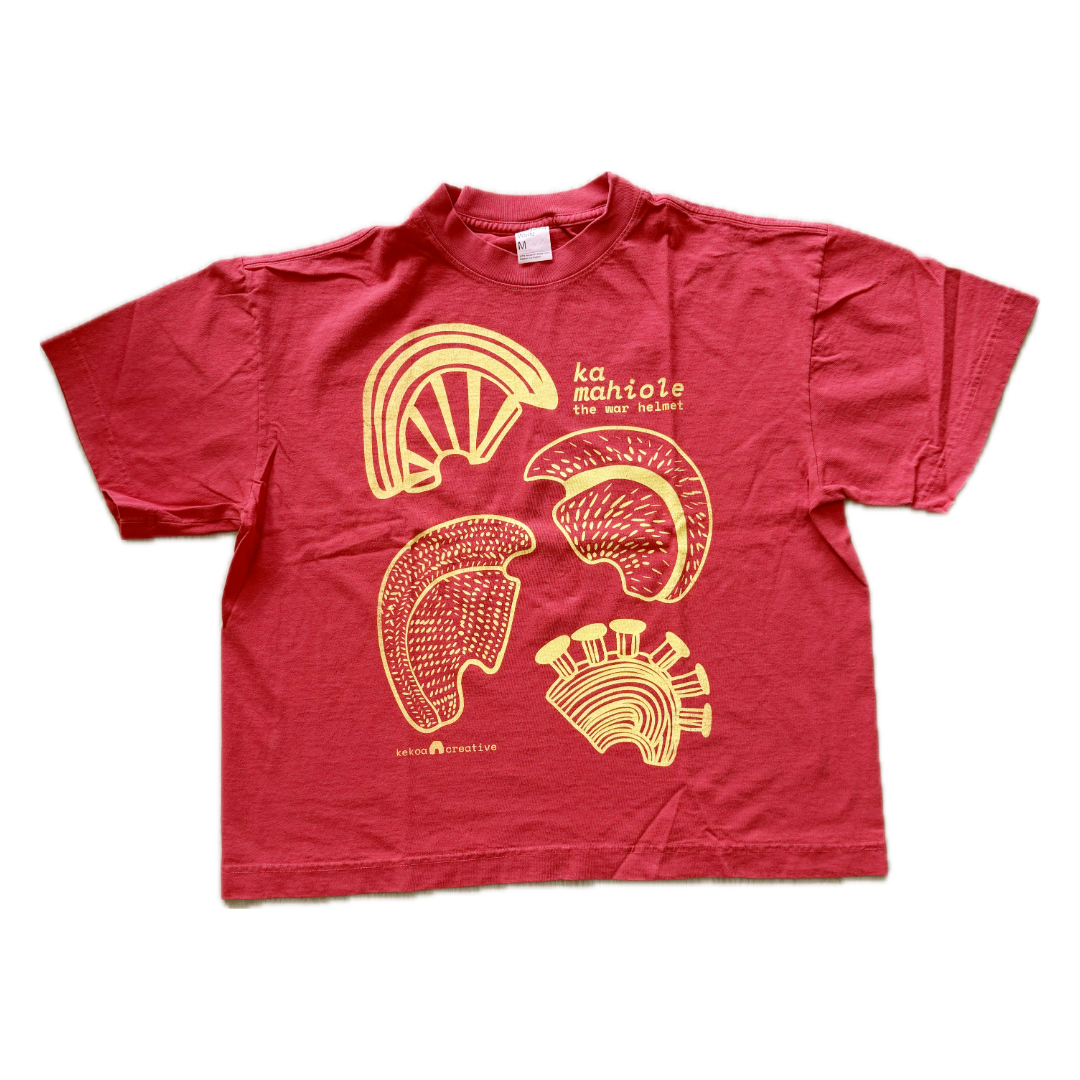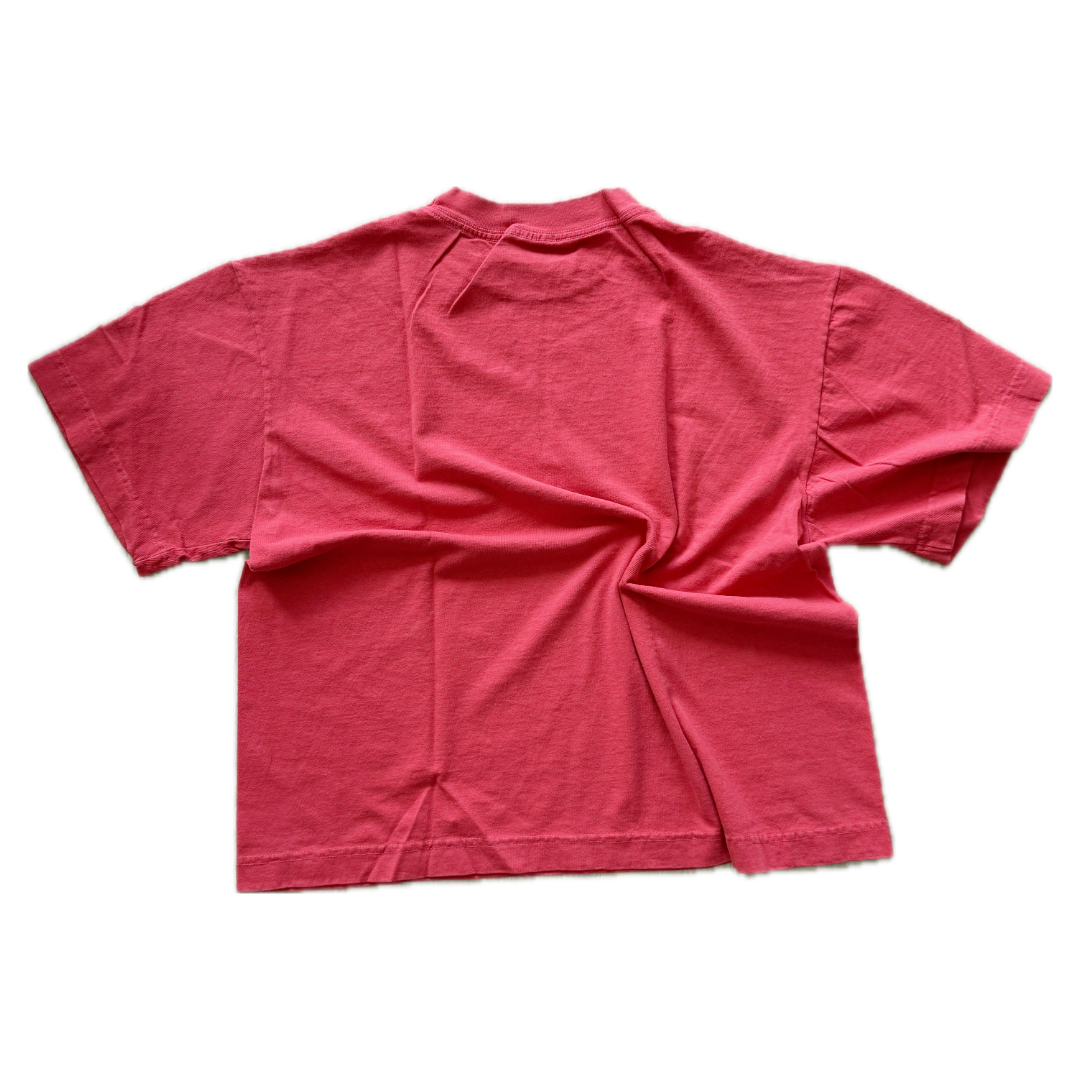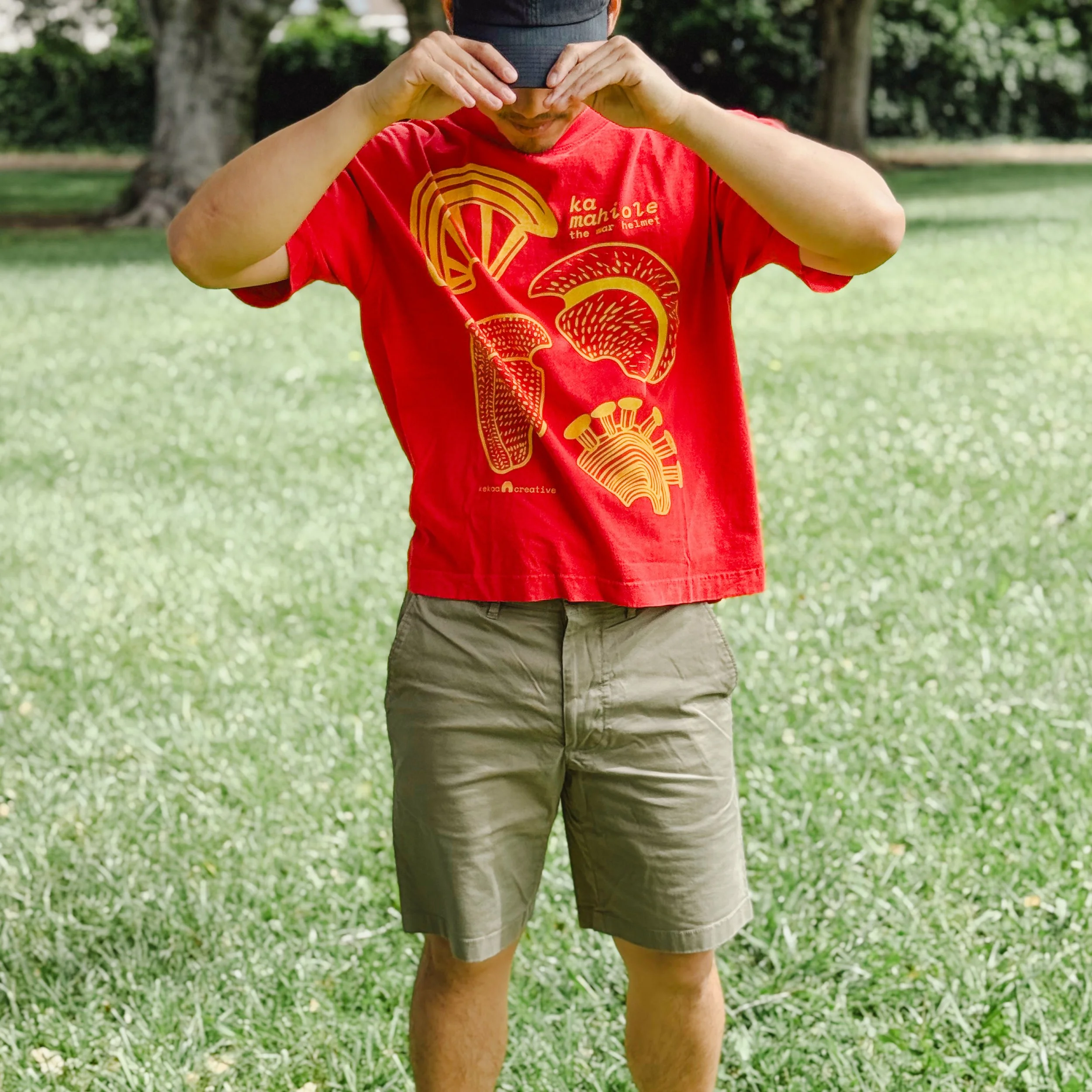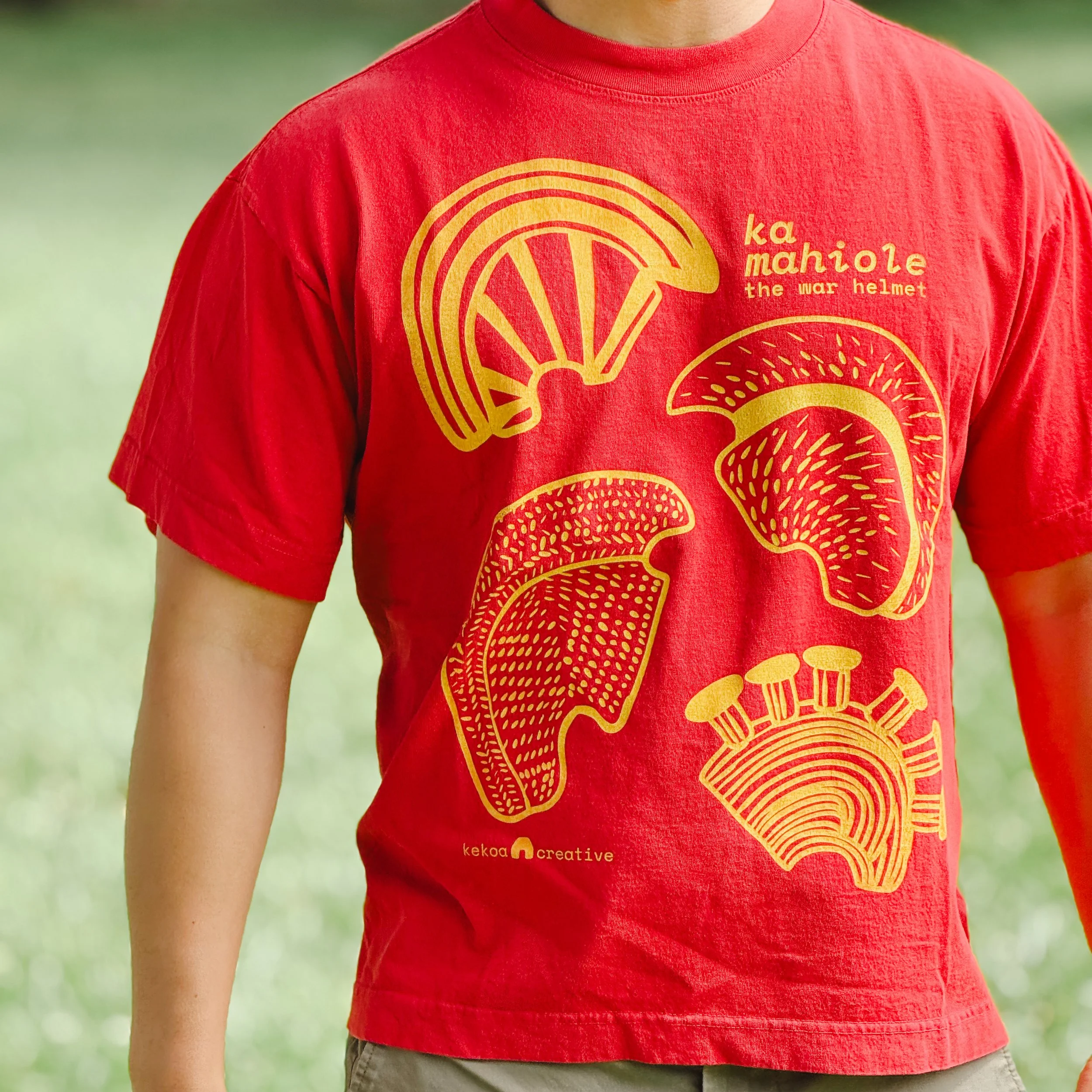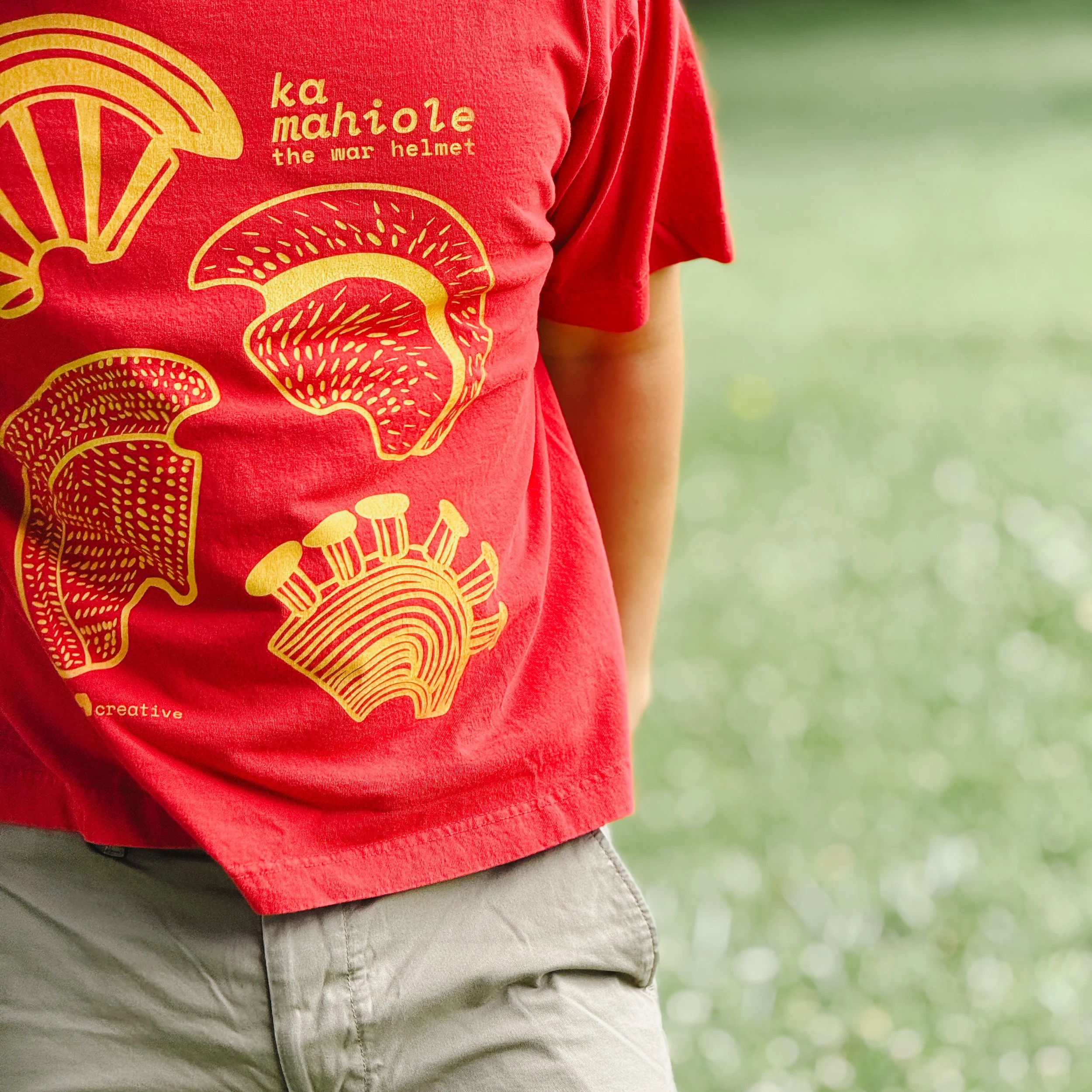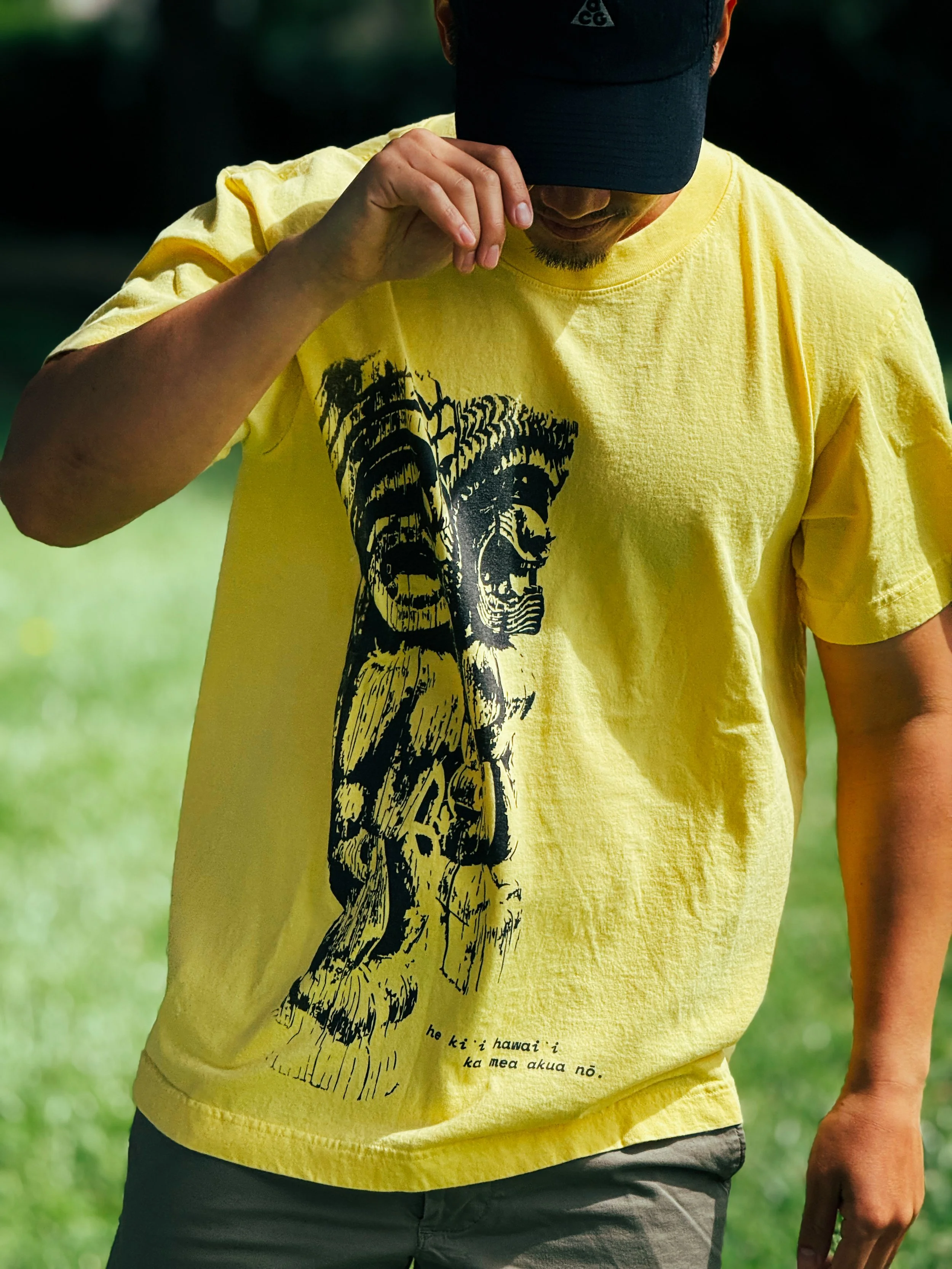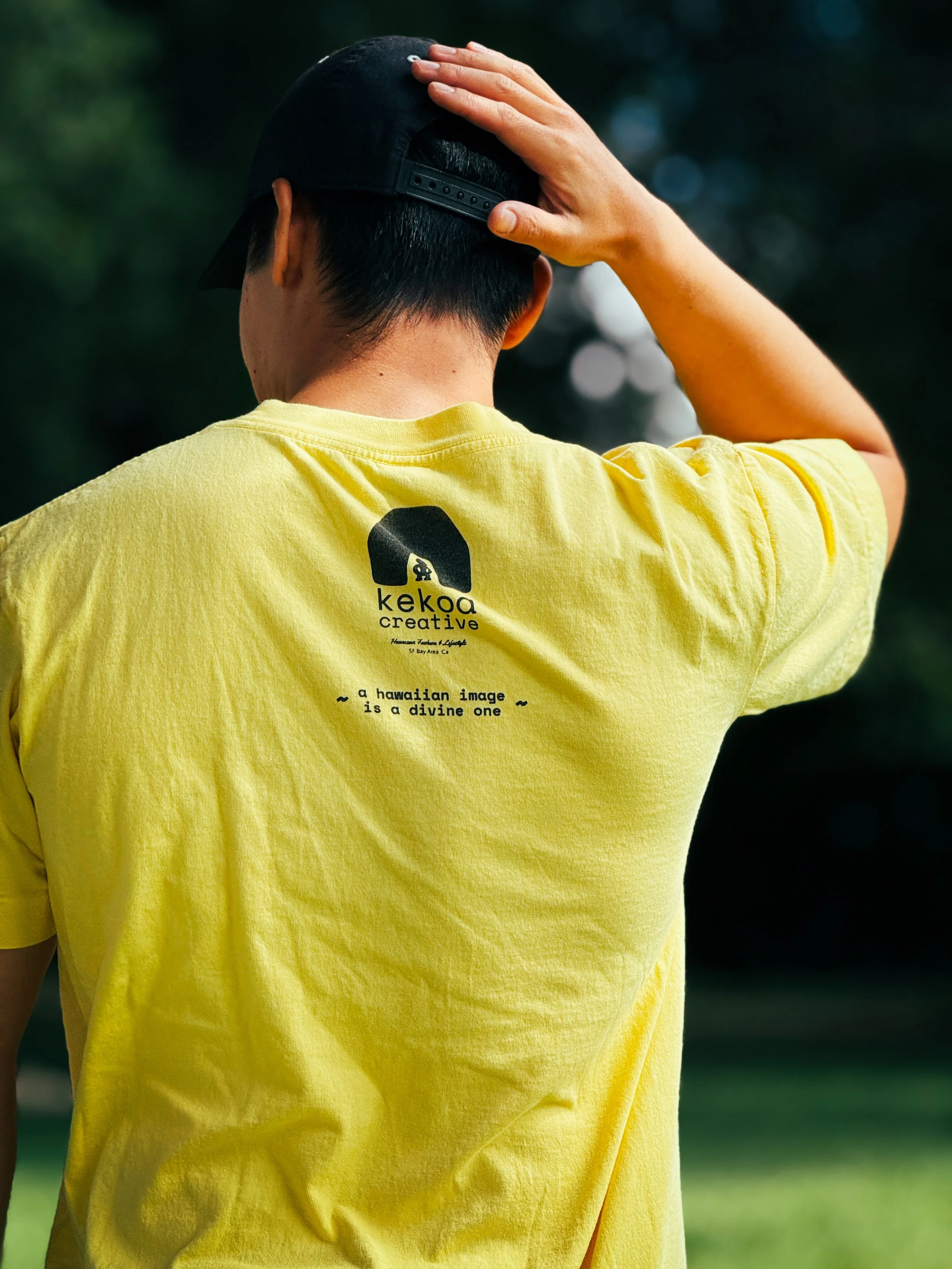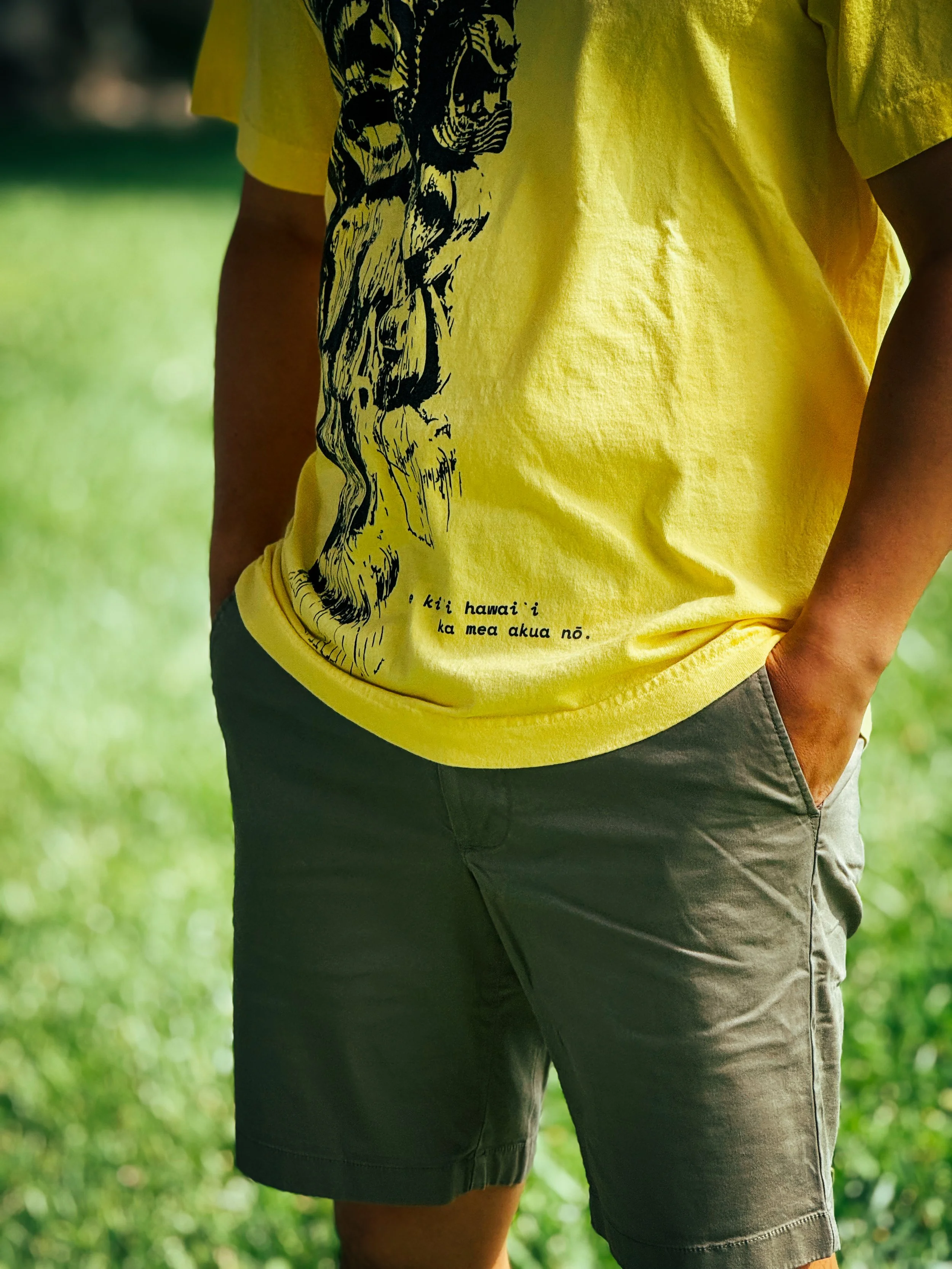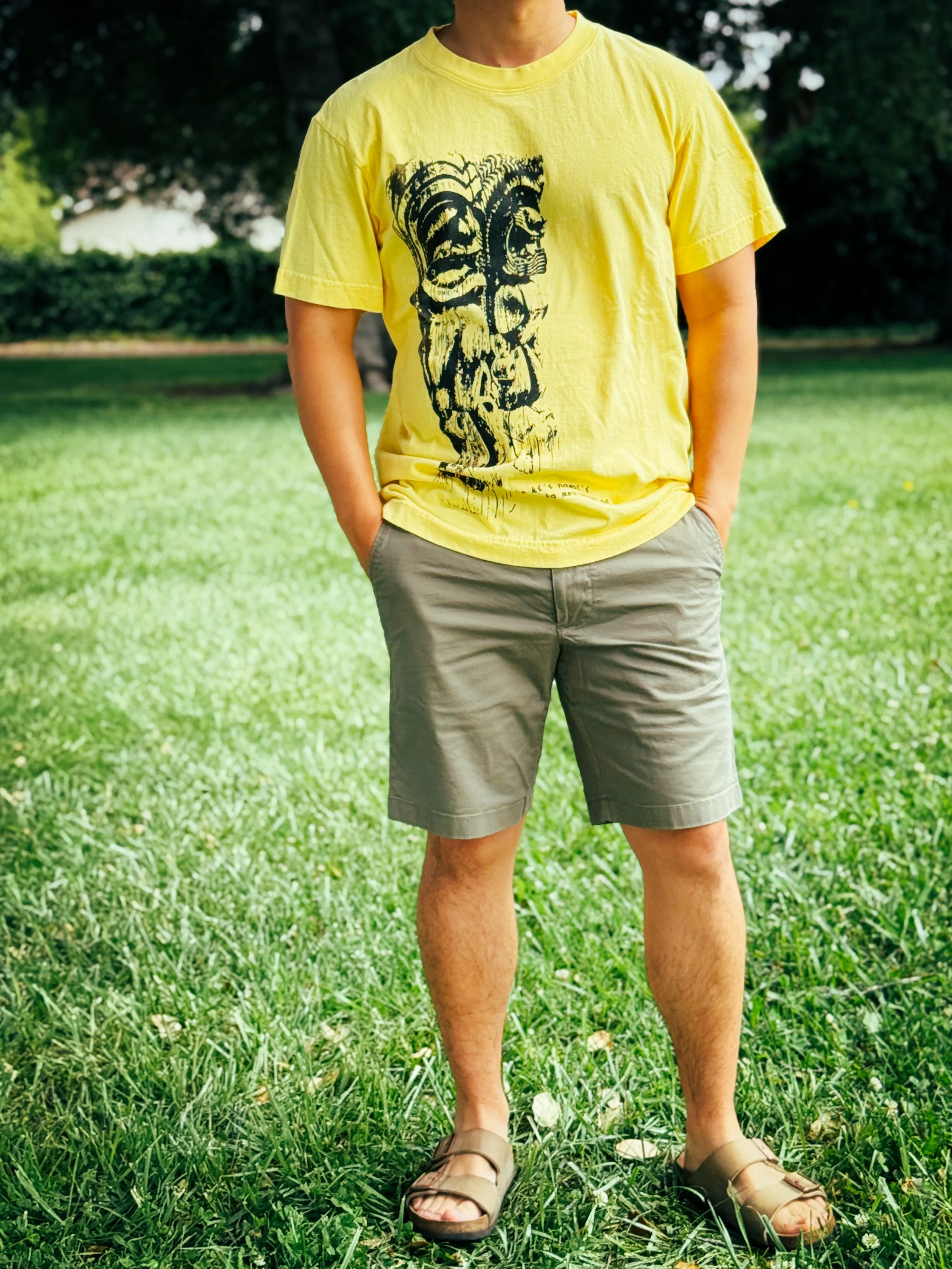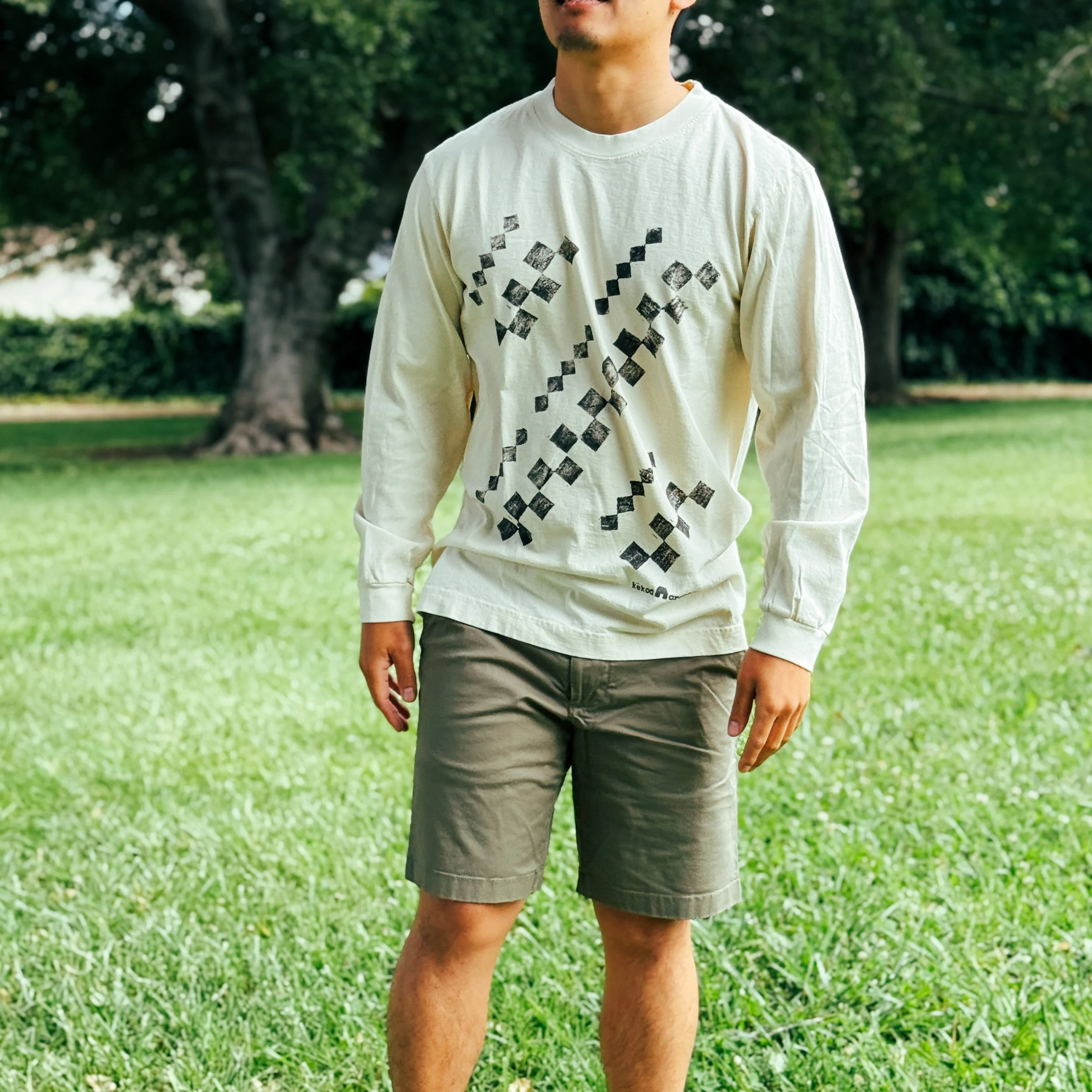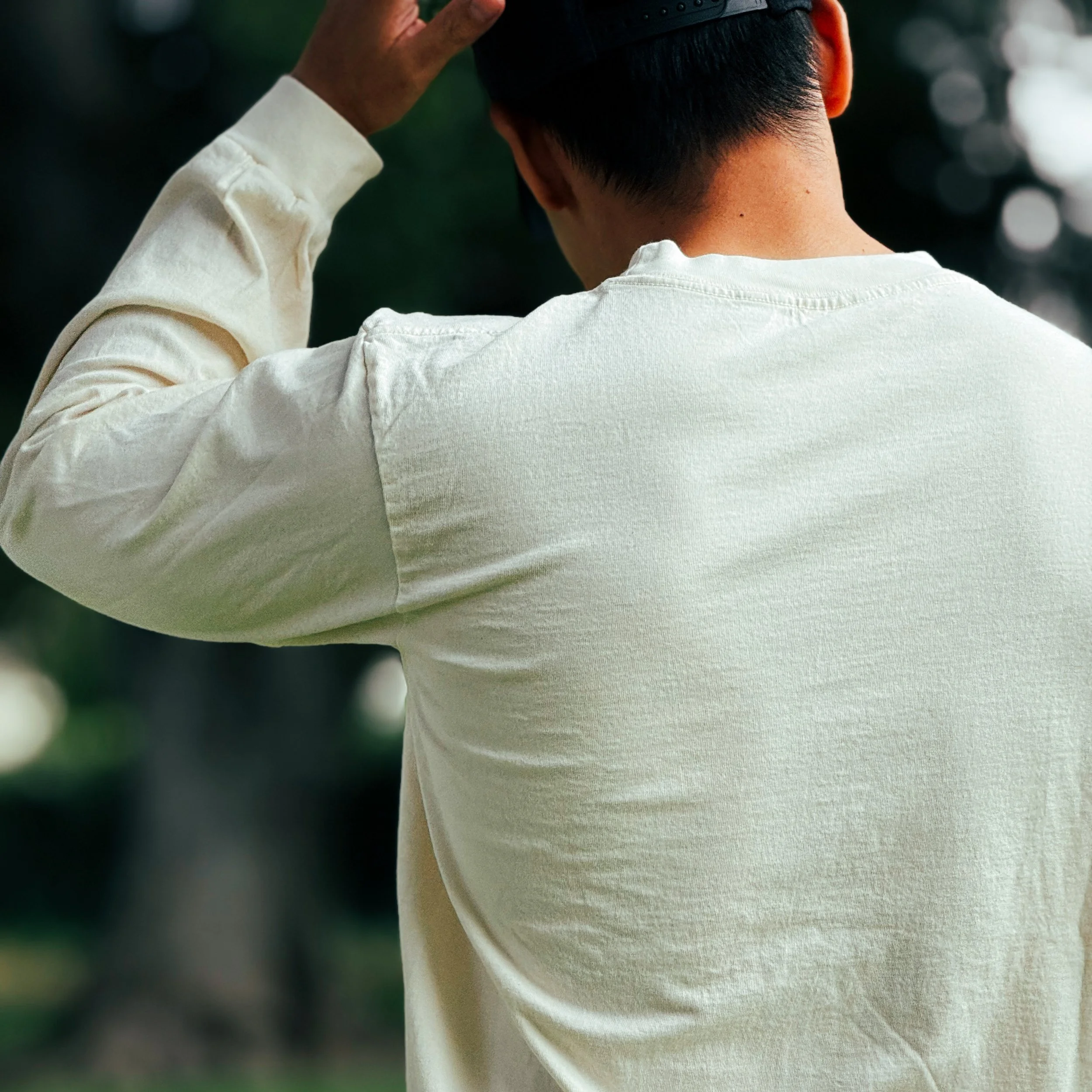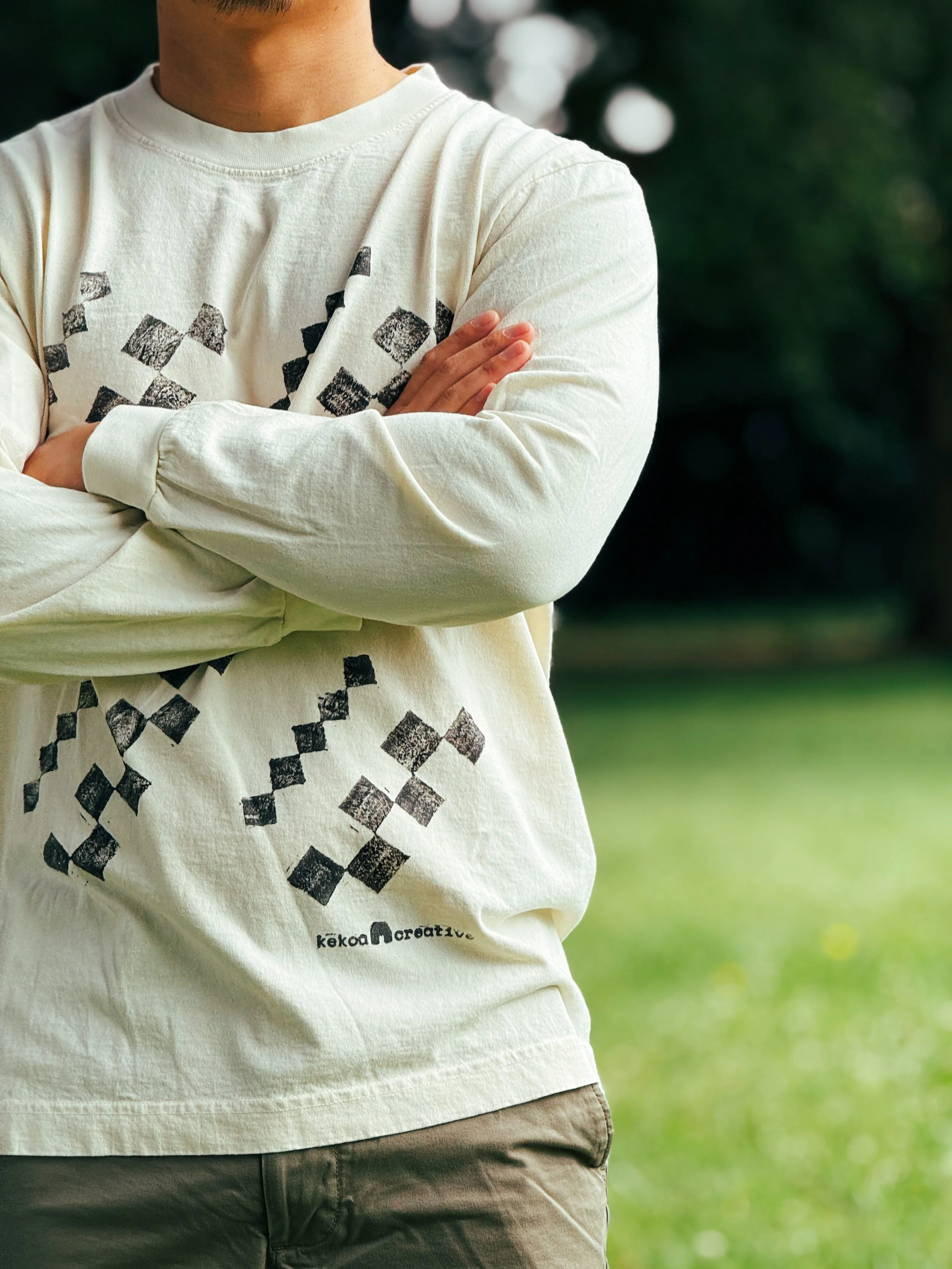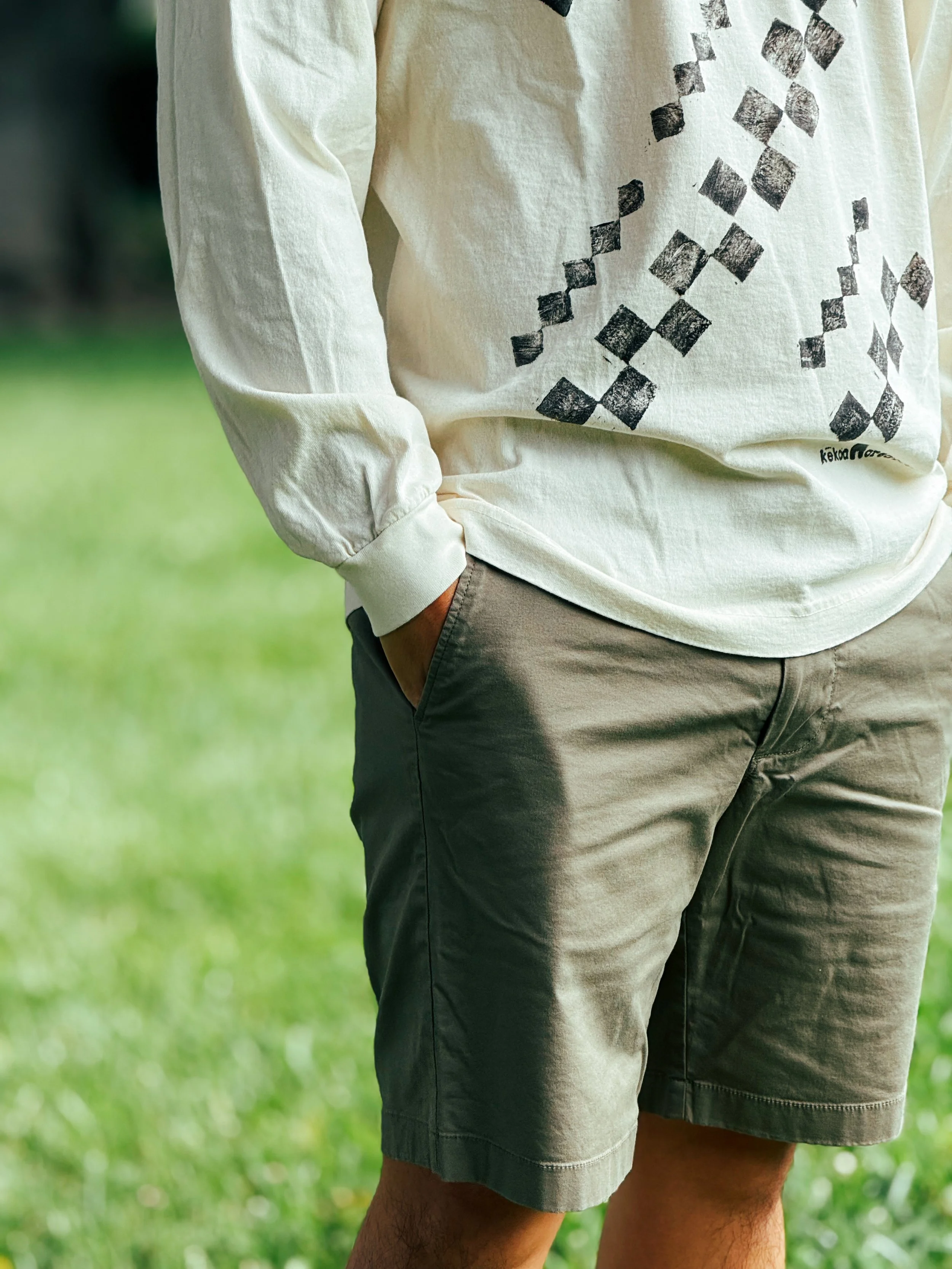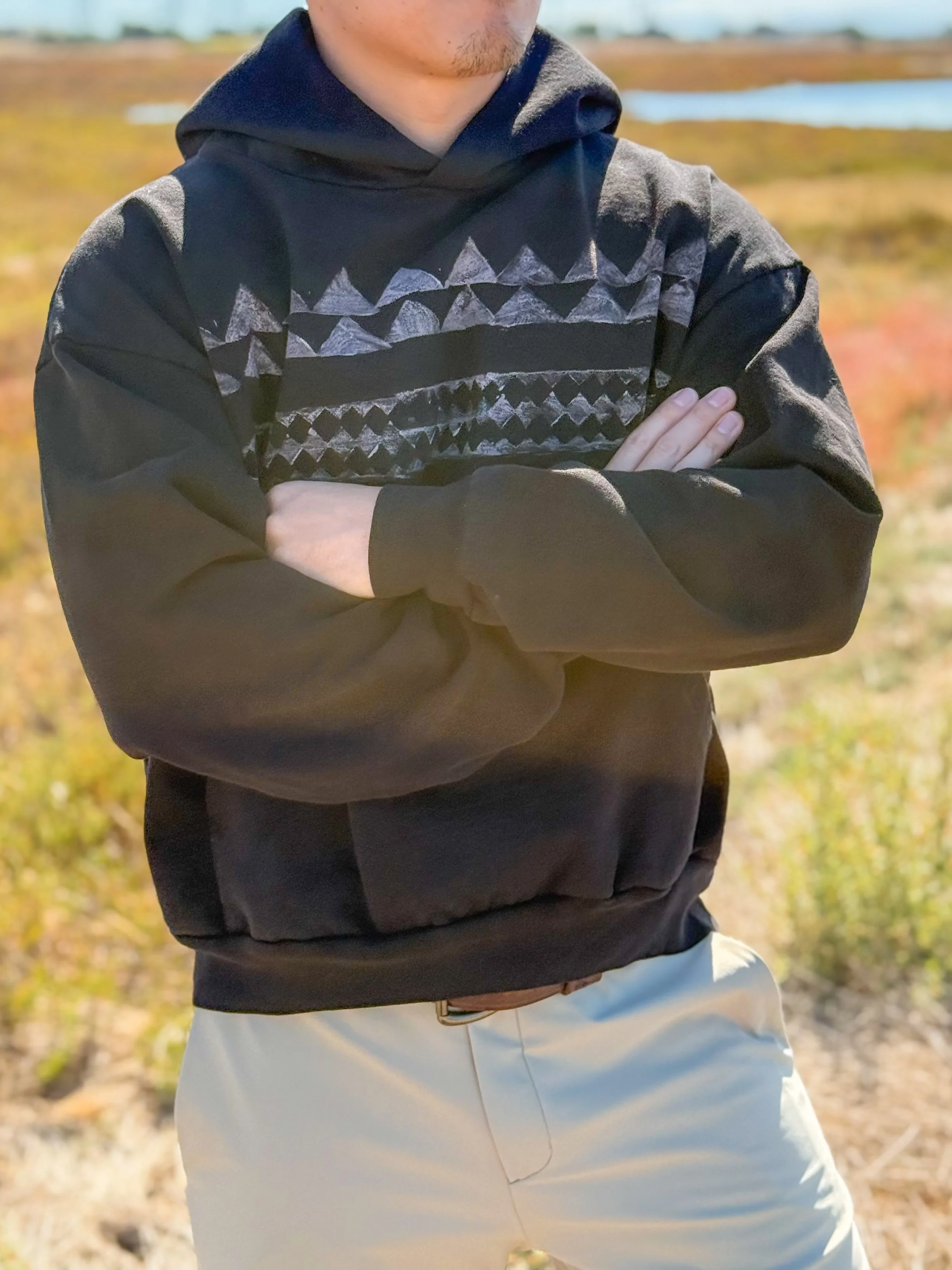Sustainability Story:
Part of our Trash Tee Collection, this crop tee transforms textile waste into meaningful cultural fashion. By choosing reclaimed waste cotton and water-based inks, we're reducing environmental impact while creating clothing that honors Hawaiian ancestral knowledge and environmental stewardship—true mālama ʻāina in practice.
Eco-Friendly Features:
Water-Based Inks: Environmentally friendly screen printing inks
Free from harmful chemicals and heavy metals
Soft hand feel that won't crack or peel
Biodegradable and safe for direct skin contact
Lower environmental impact than plastisol inks
Material Details:
Fabric: 100% reclaimed waste cotton
Weight: Medium-weight, soft hand feel
Printing: Water-based inks in cream and white
Fit: Crop fit, boxy (sits above hip)
Care: Machine wash cold, hang dry recommended
Sourced through: Everybody.World partnership
Production:
Our Trash Collection clothing is made by Everybody.World, which has been creating biodegradable fabrics from cotton waste since 2016. They support local production in Los Angeles, and all their products are made in the Americas. Their processes use less water, energy, and chemicals to minimize our carbon footprint and environmental impact.
Kekoa Creative's Trash Tee Collection aims to return to the earth, so we made this collection fully biodegradable.
Each tee is screenprinted by hand in small batches at our San Francisco Bay Area studio. Pattern placement may vary slightly, and the design will naturally soften and fade over time with wear and washing, adding to its unique character.
Fit & Sizing:
The crop fit trash tee features a shorter, boxy silhouette that sits above the hip. The Trash Collection is known for its relaxed, comfortable fit. Garment measurements may vary slightly due to the dye process—please refer to our size chart below for guidance.
Size Chart:
The Trash Collection features a loose boxy fit. Each garment contains a unique blend of cotton recycled fibers. Measurements are approximate and may deviate 1" due to variances in the garment dye process.
Crop Trash Tee Size Chart
Care Instructions:
Machine wash cold with like colors
Do not bleach
Tumble dry medium, inside out
To reduce energy use, hang dry in the shade
Avoid leaving in the sun as textile dye is sensitive to UV light
Water-based ink will soften naturally with washing for a vintage feel
Cultural Context - HĀʻULE LAU Collection:
This design is part of our HĀʻULE LAU (Falling Leaves) fall/winter collection, exploring themes of Lonoikamakahiki and hoʻoilo—the season of falling leaves, replenishment, and the return of rain that nourishes the land.
The HĀʻULE LAU collection honors the cyclical nature of Hawaiian seasons, celebrating the transition from the hot, dry kau wela (summer) to the cool, wet hoʻoilo (winter). This is the season of Lono, the akua of agriculture, peace, and fertility, when the land rests and regenerates, preparing for the abundance of the coming year.
Each piece in this collection carries the wisdom of observing natural signs, honoring seasonal transitions, and maintaining the balance between activity and rest that sustains both ʻāina and lāhui.
FAQ:
Q: What does "Kaʻi ka puaʻa i luna o Hāʻupu, e ua ana" mean?
A: This ʻōlelo noʻeau translates to "When the pigs follow above Hāʻupu, it is going to rain." It's an ancestral weather prediction from Kauaʻi that describes how clouds gathering above Hāʻupu mountain in formations resembling pigs walking across the peak signal incoming rain.
Q: What is an ʻōlelo noʻeau?
A: ʻŌlelo noʻeau are Hawaiian proverbs, poetical sayings, or wise sayings that encode ancestral knowledge, cultural values, and observations about the natural world. They are passed down through generations and often contain kaona (hidden meanings).
Q: What is the significance of Hāʻupu mountain?
A: Hāʻupu is a prominent mountain on Kauaʻi that holds cultural and navigational significance. The name itself carries kaona meaning "to stir up one to recollection," "to recall," or "to remember suddenly"—calling us to remember ancestral wisdom and observe the ʻāina closely.
Q: What does kukui symbolize in Hawaiian culture?
A: Kukui means "light" or "torch" and symbolizes knowledge, enlightenment, and guidance. The kukui nut was traditionally used for light (burned as candles), and the tree represents the potential for wisdom to illuminate darkness. In this design, it also represents the seasonal transition from pō (darkness/rest) to ao (light/growth).
Q: What is the HĀʻULE LAU collection?
A: HĀʻULE LAU (Falling Leaves) is our fall/winter collection exploring themes of Lonoikamakahiki and hoʻoilo—the rainy season when leaves fall, the land rests, and rain replenishes the ʻāina. It honors the cyclical wisdom of Hawaiian seasons and the balance between rest and abundance.
Q: What is hoʻoilo?
A: Hoʻoilo is the Hawaiian rainy season (roughly November through April), associated with the akua Lono. It's a time of rest, replenishment, and regeneration when the land receives life-giving rain and prepares for the growing season ahead.
Q: Is this tee sustainably made?
A: Yes! Made from 100% reclaimed waste cotton through our partnership with Everybody.World, preventing textile waste while supporting eco-friendly fashion. Printed with water-based inks that are environmentally responsible, and the entire garment is biodegradable.
Q: How does the crop fit run?
A: The crop fit trash tee has a boxy silhouette that sits above the hip. It's designed to be relaxed and comfortable. Please refer to our size chart for specific measurements, as garments may vary slightly due to the dye process.
Q: Why is the colorway called nahele green?
A: Nahele means "forest" or "wilderness" in Hawaiian. The nahele green colorway evokes the lush forest landscapes of Kauaʻi during the rainy season, when the ʻāina is vibrant and thriving with life-giving water.
ʻŌlelo Hawaiʻi Glossary:
Kaʻi: To lead, guide; to walk in procession
Puaʻa: Pig, swine, pork
Hāʻupu: Mountain on Kauaʻi; "to stir up one to recollection," "to recall"
Ua: Rain; to rain
ʻŌlelo Noʻeau: Proverb, wise saying, poetical expression
Kaona: Hidden meaning, veiled reference, layered significance
Kānaka: People, persons; Native Hawaiians
Kūpuna: Ancestors, elders, grandparents
Mele: Song, chant, poem
Hoʻoilo: Rainy season (roughly November-April); winter
Kau Wela: Dry season (roughly May-October); summer
ʻĀina: Land, earth; that which feeds
Lāhui: Nation, people, race; Hawaiian people collectively
Kukui: Candlenut tree; light, torch, enlightenment
Hua Kukui: Kukui nut, candlenut
Lau: Leaf, leaves
Hāʻule Lau: Falling leaves; autumn
Pō: Night, darkness; realm of ancestors and creation
Ao: Light, day, world; realm of the living
Lonoikamakahiki: The akua Lono during the makahiki season
Lono: Hawaiian deity of agriculture, peace, fertility, and rain
Makahiki: Ancient Hawaiian festival season honoring Lono (roughly October-February)
Mālama ʻĀina: To care for the land; environmental stewardship
Nahele: Forest, wilderness, uncultivated land





